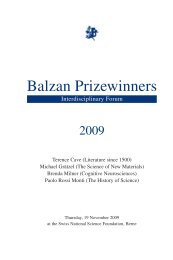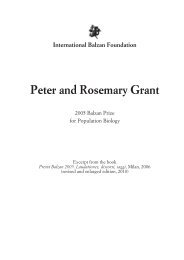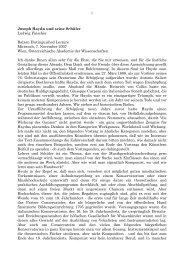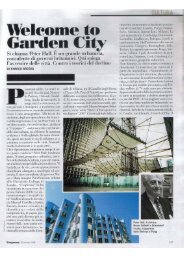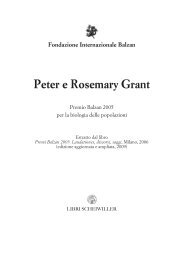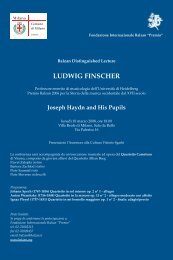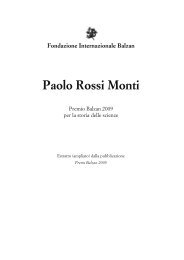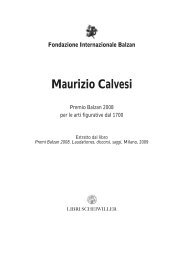Russell J. Hemley and Ho-kwang Mao
Russell J. Hemley and Ho-kwang Mao
Russell J. Hemley and Ho-kwang Mao
Create successful ePaper yourself
Turn your PDF publications into a flip-book with our unique Google optimized e-Paper software.
2005 Balzan Prize<br />
Mbar at the center, even from the early years), claims for the temperature at the<br />
Earth’s center varied from 4500 to close to 8000 K, even through the 1980s. The<br />
key piece of information needed to settle this question was the determination of<br />
the melting temperature at multimegabar pressures because the temperature of<br />
the inner-core boundary must be where the iron alloy of the outer core freezes<br />
to form the solid inner core. In fact, determination of the melting curve of iron<br />
became an area of controversy in the field of mineral physics because the requisite<br />
techniques used in this work were in their infancy.<br />
A systematic study of the Earth’s core as a problem in experimental mineral<br />
physics was therefore launched in their group. Entirely new techniques to address<br />
the problem of the Earth’s core from the point of view of the component<br />
“minerals” were developed. The melting curve of Fe to above 1 Mbar was directly<br />
measured, providing bounds on the temperature <strong>and</strong> density at the inner<br />
core boundary [Phys. Earth Planet. Inter. 143-144, 455 (2004)]. Techniques were<br />
developed <strong>and</strong> then applied to the strength [Science 276, 1242 (1997)], elasticity<br />
[Phys. Rev. Lett. 80, 2157 (1998)] <strong>and</strong> texture [Nature 405, 1044 (2000)] at<br />
core pressures. <strong>Hemley</strong> <strong>and</strong> <strong>Mao</strong>’s student Sebastien Merkel measured the first<br />
vibrational spectrum of iron at core pressures [Science 288, 1626 (2000)]. The<br />
first measurements of the thermodynamic <strong>and</strong> elastic properties were measured<br />
using newly developed synchrotron inelastic scattering techniques [Science 292,<br />
914 (2000)], which brought together experiment <strong>and</strong> theory. For example, observation<br />
of a strong lattice strain anisotropy in iron indicates a large seismic<br />
anisotropy, <strong>and</strong> therefore a perfect alignment of crystals may not be needed to<br />
explain the seismic observations. This work culminated in a review (2001) which<br />
defined the broad range of this new underst<strong>and</strong>ing of the Earth’s outer <strong>and</strong> inner<br />
core [Internat. Geol. Rev. 43, 1 (2001)]. These experiments have spawned<br />
numerous related studies around the world. In short, for the first time since the<br />
proposed existence of the Earth’s core, this once inaccessible <strong>and</strong> enigmatic region<br />
is now a problem in experimental science.<br />
New Chemical Reactions in the Earth<br />
A central finding of high-pressure mineral physics is that the behavior of materials<br />
within planets can be far different from what is thought, based on the<br />
familiar principles developed from knowledge of substances found at the surface.<br />
22



